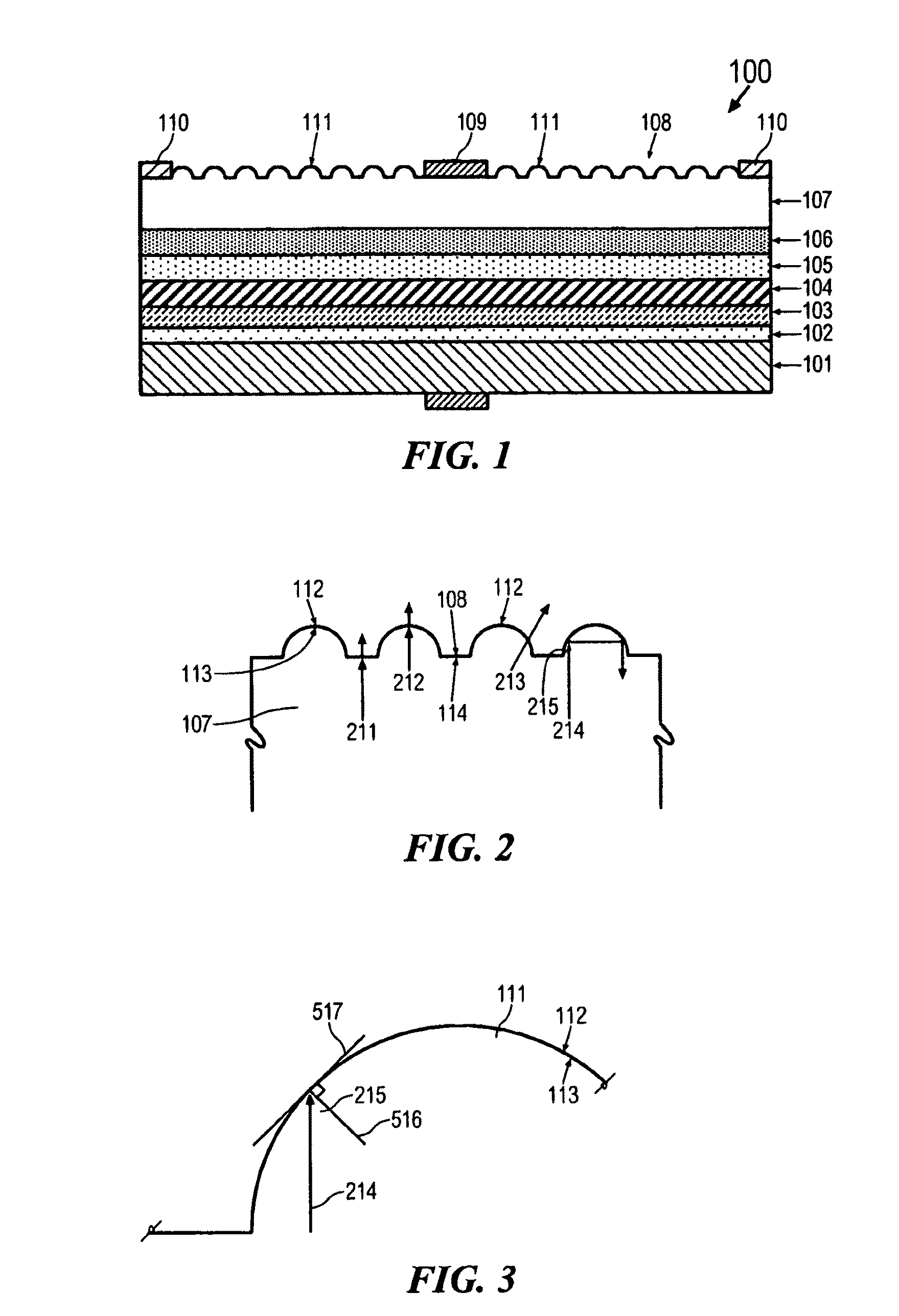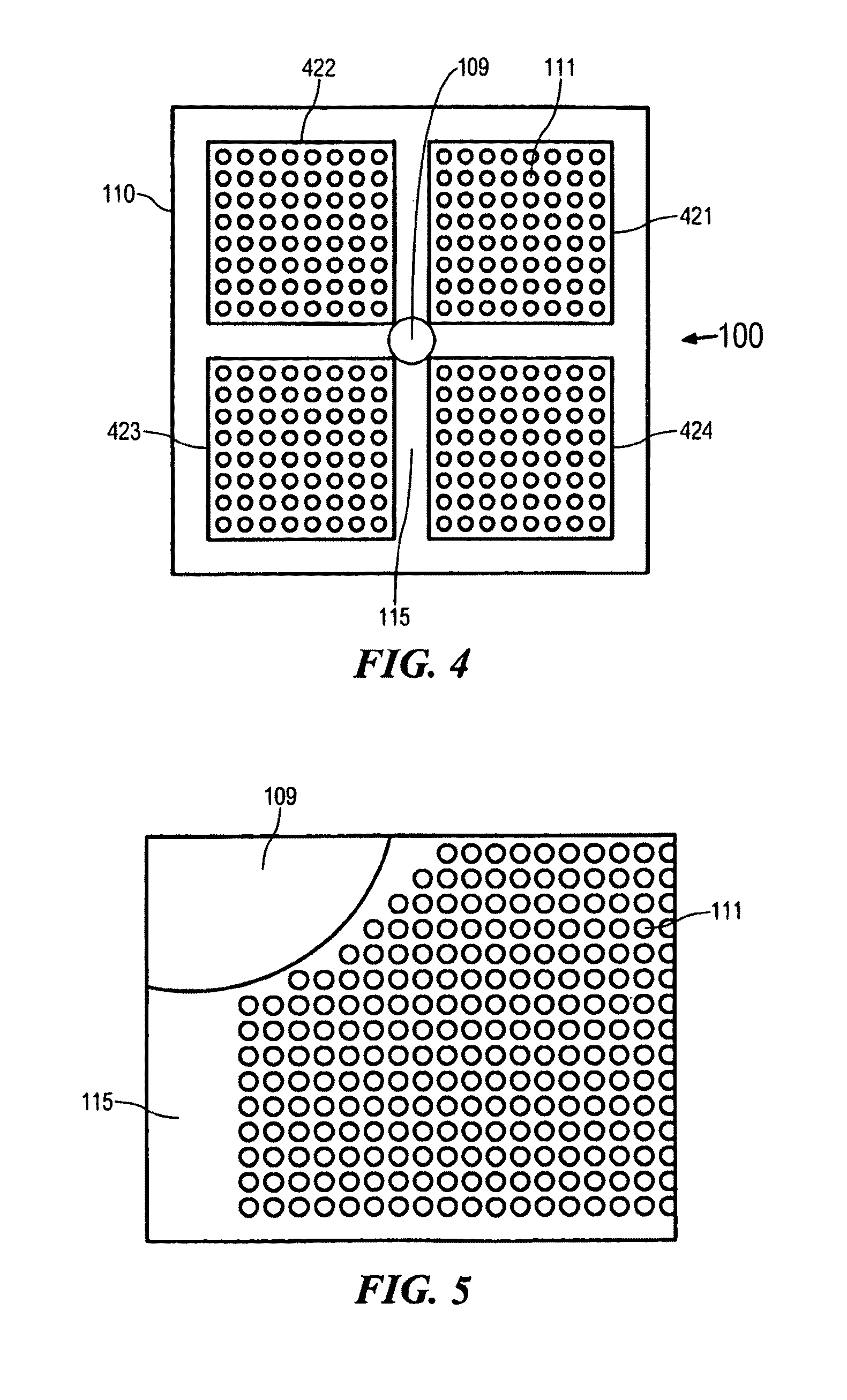External light efficiency of light emitting diodes
a technology external light, which is applied in the direction of basic electric elements, semiconductor devices, electrical equipment, etc., can solve the problems of poor thermal conductivity, limited light extraction efficiency of conventional gan-based leds, and difficult to achieve further improvement, so as to improve the external light efficiency of light emitting diodes, reduce internal light reflection, and increase light output
- Summary
- Abstract
- Description
- Claims
- Application Information
AI Technical Summary
Benefits of technology
Problems solved by technology
Method used
Image
Examples
Embodiment Construction
[0034]To refer to FIGS. 1 to 4 there is shown a first preferred embodiment being a light emitting diode 100 having:[0035]a first contact layer 101 of conductive metal;[0036]a seeding layer 102, a reflective layer 103;[0037]an ohmic contact layer 104;[0038]a p-type material layer 105 such as, for example, GaN;[0039]a plurality of epitaxial layers forming an active layer 106; and[0040]a conductive layer 107 of n-type material such as, for example, GaN.
[0041]Any layer may be a stack of multiple layers. The n-type layer 107 is relatively thick, whereas the p-type layer 105 is relatively thin. The active layer 106 may be one or more of: a quantum well, quantum wells, quantum dots and quantum wires.
[0042]The conductive layer 107 is for the transmission of light generated in the active layer 106, the light passing through an external light output surface 108 of conductive layer 107. The external surface 108 is the external surface of the air-n-GaN interface. A bonding pad 109 is formed on ...
PUM
 Login to View More
Login to View More Abstract
Description
Claims
Application Information
 Login to View More
Login to View More - R&D
- Intellectual Property
- Life Sciences
- Materials
- Tech Scout
- Unparalleled Data Quality
- Higher Quality Content
- 60% Fewer Hallucinations
Browse by: Latest US Patents, China's latest patents, Technical Efficacy Thesaurus, Application Domain, Technology Topic, Popular Technical Reports.
© 2025 PatSnap. All rights reserved.Legal|Privacy policy|Modern Slavery Act Transparency Statement|Sitemap|About US| Contact US: help@patsnap.com



